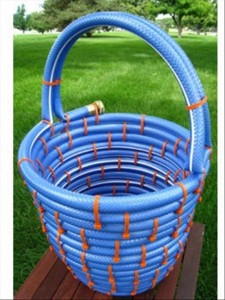|
Contaminant
|
Treatment
|
| Acidic Water |
Soda ash injection; Sodium Hydroxide injection; Calcite |
| Acrylamide |
Carbon (with moderate probability of success) |
| Alachlor |
Carbon |
| Alpha particles |
Reverse Osmosis; distillation |
| Alum (Aluminum Sulfate) |
Reverse Osmosis; distillation |
| Aluminum |
Water softener; Reverse Osmosis; distillation; electrodialysis |
| Ametryn |
Reverse Osmosis, carbon, and UV used together |
| Ammonia |
Water softener with previous removal of calcium and magnesium; deionization; natural zeolite, chlorination |
| Antimony |
Reverse Osmosis; coagulation/filtration |
| Arsenic |
Ion exchange; Reverse Osmosis; distillation |
| Asbestos |
Reverse Osmosis |
| Atrazine |
Carbon |
| Barium |
Ion exchange; Reverse Osmosis; lime softening; electrodialysis |
| Benzene |
Adsorption with carbon; ozone |
| Benzo(a)pyrene (PAHs) |
Carbon |
| Beta particles and photon emitters |
Ion exchange-mixed bed; Reverse Osmosis; distillation |
| Cyanotoxins |
UV; Reverse Osmosis; nanofiltration; carbon; chlorination |
| Total Coliforms (including fecal coliform and E. Coli) |
UV; chlorine/chloramine disinfection; ultrafiltration; Reverse Osmosis; ozone |
| Beryllium |
Activated alumina; coagulation/filtration; ion exchange; lime softening; Reverse Osmosis |
| Alkalinity |
Aeration; acid injection; anion exchange |
| Bisphenol A (BPA) |
No recommended treatment |
| Boron (Borate) |
Reverse Osmosis; ion exchange; increasing pH |
| Bromates (Potassium Bromate and Sodium Bromate) |
Prevention by pH alteration; anion exchange; ammonia impregnated carbon |
| Brackish Water |
Reverse Osmosis; distillation |
| Bromine (Bromide) |
Reverse Osmosis; carbon; UV; dialysis |
| Cadmium |
Reverse Osmosis; cation exchange; dialysis |
| Carbaryl (Sevin) |
Carbon; coagulation; ozone |
| Calcium |
Ion exchange; Reverse Osmosis; deionizers; dialysis; distillation; ultrafiltration |
| Carbofuran |
Carbon |
| Carbon dioxide |
Aeration; deionization; raising pH with Soda Ash injection |
| Carbon tetrachloride |
Air stripping; carbon; coconut shell carbon; Reverse Osmosis |
| Chloral hydrate |
Carbon |
| Chloramines |
Carbon; catalytic carbon; ascorbic acid, UV |
| Chlordane |
Carbon |
| Chloride |
Reverse Osmosis; electrodialysis; distillation; anion exchanger |
| Chlorine |
Carbon; KDF |
| Chlorine dioxide |
Carbon (possible success) |
| Chlorite |
Carbon (possible success) |
| Chloroacetones |
No recommended treatment |
| Chlorobenzene |
Carbon; Carbon with packed tower aeration |
| Chloropicrin |
Chemical oxidation |
| Chlorpyrifos |
Coagulation; carbon; ozone |
| Chromium |
Reverse Osmosis; distillation; strong base anion exchange regenerated with caustic soda |
| Color |
Carbon; anion exchange after water softener; iron/manganese removal methods |
| Copper |
POE applications and plumbing fixtures protected by cation exchange, pH control, and film-creating compounds such as polyphosphates; POU treatment: Reverse Osmosis, distillation, and carbon |
| Corrosion |
Increasing pH; Reverse Osmosis to reduce chlorides; carbon filtration to reduce chloramines/chlorine; lowering temperature of hot water heater; sediment filtration; decrease flow rate |
| Cryptosporidium |
Carbon; Reverse Osmosis; nanofiltration; UV; ozone; distillation |
| Cyanazine (Bladex) |
Carbon |
| Cyanide |
Reverse Osmosis; electrodialysis; chlorination, retention, and filtration; Carbon with packed tower aeration |
| 1,2-Dichloropropane |
Carbon with packed tower aeration; carbon |
| 1,3-Dichloropropene/ 1,3-Dichloropropane |
Carbon; hydrolosis |
| 1,4-Dioxane |
Biological activated carbon; UV or ozone with hydrogen peroxide |
| 2,4-D (2,4-dichlorophenoxyacetic acid) |
Carbon |
| Dalapon |
Carbon |
| DBCP (1,2-Dibromo-3-chloropropane) |
Carbon and packed tower aeration; carbon |
| DDT (Dichlorodiphenyltrichlorethane) |
Carbon; coagulation |
| DEHA [Di(2-ethylhexyl) adipate] |
Carbon |
| DEHP [Di(2-ethylhexyl) phthalate] |
Carbon |
| Diazinon (Spectracide) |
Hydrolosis |
| Dichloroacetic Acid (DCA) |
Prevention through pre-filtration to remove organic matter or pH adjustment prior to treatment |
| o-Dichlorobenzene |
Carbon with packed tower aeration; Carbon |
| p-Dichlorobenzene |
Carbon with packed tower aeration; carbon |
| 1,2-Dichloroethane |
Carbon with packed tower aeration; activated carbon |
| 1,1-Dichloroethylene |
Carbon with packed tower aeration; activated carbon |
| cis-1,2-Dichloroethylene |
Carbon with packed tower aeration; reduction by Reverse Osmosis |
| trans-1,2-Dichloroethylene |
Carbon with packed tower aeration; reduction by Reverse Osmosis |
| Dichloromethane (DCM) |
Carbon with packed tower aeration |
| Dicofol |
Hydrolosis; possible treatment with activated carbon |
| Diflubenzuron |
Activated carbon |
| Dimethoate |
Chlorination and Carbon |
| Dinoseb |
Carbon |
| Dioxin (2,3,7,8-TCDD) |
Carbon |
| Diquat |
Carbon |
| Diuron (DCMU) |
Activated carbon |
| Edetic Acid (EDTA) |
Ozone with activated carbon |
| Endocrine disruptors (EDCs) |
Nanofiltration; Reverse Osmosis; activated carbon; distillation; ozone; advanced oxidization |
| Endosulfan |
Activated carbon |
| Endothall |
Carbon |
| Endrin |
Carbon |
| Epichlorohydrin (ECH) |
No recommended treatment; limited usage |
| Ethylbenzene |
Carbon |
| Ethylene dibromide |
Carbon |
| Fenitrothion |
Hydroloysis |
| Flouride |
Reverse Osmosis; distillation; filtration through activated alumina |
| Formaldehyde |
Carbon |
| Foaming agents |
Coagulation/flocculation; sedimentation; filtration; activated carbon |
| Giardia lamblia |
Filtration of 1 micron size or below; UV; Reverse Osmosis; ozone; shock chlorination |
| Glyphosate (Roundup) |
Carbon |
| Haloacetic acids (HAA5) |
Pre-filtering prior to disinfection treatment; activated carbon; Reverse Osmosis |
| Hardness |
Water softener; Reverse Osmosis; lime softening; polyphosphates; siliphos |
| Heptachlor |
Carbon |
| Heptachlor epoxide |
Carbon |
| Heterotrophic plate count (HPC) |
N/A |
| Hexachlorobenzene (HCB) |
Carbon |
| Hexachlorobutadiene (HCBD) |
Carbon |
| Hexachlorocyclopentadiene |
Carbon with packed tower aeration |
| Hydrogen Sulfide |
Oxidizing with gas: chlorine, aeration, hydrogen peroxide, ozone, potassium permanganate followed by filtration of oxidant and elemental sulphur; open tank aeration; carbon for small amounts; changing sacrifical anode of hot water heater |
| Iodine-131 |
Reverse Osmosis |
| Iron |
Ferrous Iron removal: Water softener; oxidation with air, ozone, potassium permanganate, chlorine, or hydrogen peroxide; filtration with Filox, Birm, and Greensand; Ferric Iron removal: filtration with wound string filter; backwashing filter; Heme Iron removal: scavenger anion resin; oxidation with chlorine followed by mechanical filtration |
| Iron Bacteria |
Chlorination |
| Lead |
Reverse Osmosis; water softeners; removing the source; corrosion control methods in pipes including pH and alkalinity adjustment; calcium adjustment; silica or phosphate-based corrosion inhibition |
| Legionella |
Heat and flow-rate management; UV; ultrafiltration |
| Lindane |
Carbon |
| Magnesium |
Water softener; Reverse Osmosis |
| Malalthion and Malaoxon |
Activated carbon |
| Manganese |
Ion exchange; oxidation/filtration; chemical feeding then filtering through greensand, carbon, or filter ag |
| MCPA (4-(2-methyl-4-chlorophenoxy)acetic acid) |
Carbon; ozone |
| Mercury |
Activated carbon; Reverse Osmosis; distillation; ion exchange; sulfide precipitation; starch xanthate |
| Methane |
Atmospheric aeration |
| Methanol (Methyl Alchohol) |
Ozonation with UV |
| Methoxychlor |
Carbon |
| Methyl Tertiary-Butyl Ether (MTBE) |
Coconut shell carbon; reduction through carbon block filtration |
| Metolachlor (S-Metolachlor) |
Carbon |
| Molinate |
Carbon |
| Monochloracetic Acid (MCAA or Chloroacetic Acid) |
No recommended treatment; formation during water disinfection may be prevented with pre-filtration to remove organic matter, or pH adjustment |
| Mutagen X and MX Analogues |
Activated carbon |
| Naphthalene |
Activated carbon |
| NDMA (N-Nitrosodimethylanime) |
Reverse Osmosis removes 50% |
| Nickel |
Strong acid cation exchanger; reduction through activated carbon and RO |
| Nitrite (measured as Nitrogen) |
Ion exchange; Reverse Osmosis; electrodialysis; distillation and blending |
| Nitrate (measured as Nitrogen) |
Ion exchange; Reverse Osmosis; electrodialysis; distillation and blending |
| Nitrilotriacetic Acid (NTA) |
Activated carbon |
| Norovirus |
Reverse Osmosis; nanofiltration; ultrafiltration; chemical oxidation; UV; distillation |
| Odor |
Activated carbon; oxidation/reduction; chlorine dioxide; ozone; hydrogen peroxide |
| Oryzalin |
Activated carbon |
| Oxamyl (Vydate) |
Carbon |
| 2-Phenylphenol (OPP) |
Activated carbon |
| Paraquat dichloride |
Activated carbon |
| Parathion (Ethyl Parthion) |
Activated carbon; hydrolysis |
| Pendimethalin |
Carbon |
| Pentachlorophenol |
Carbon |
| Perchlorate |
Reverse Osmosis; anion exchange; carbon adsorption; distillatin |
| Perfluorinated Chemicals (PFCs) |
Activated carbon; Reverse Osmosis |
| Permethrin |
Activated carbon |
| Pesticides |
Activated carbon; Ultrafiltration; Reverse Osmosis |
| pH |
Raising pH: feeding soda ash, caustic soda, sodium bicarbonate, or potassium hydroxide; calcite; corosex; Lowering pH: feeding sulfuric, hydrochloric acids, phosphoric acid, acetic acid, citric acid, vinegar into water |
| Pharmaceuticals and Personal Care Products (PPCPs) |
Chlorine; ozone; activated carbon; Reverse Osmosis |
| Phosphates |
Alum; sodium aluminate; ferric chloride; precipitated with lime to hydroxyapatite at pH of 10 or more and then filtered |
| Picloram |
Carbon |
| Pirimiphos-methyl |
Activated carbon |
| Polychlorinated biphenyls (PCBs) |
Carbon |
| Polynuclear Aromatic Hydrocarbons (PAHs) |
Carbon |
| Propanil |
Activated carbon |
| Pyriproxyfen |
Carbon |
| Tetrachloroethene/Perchloroethylene (PCE) |
Carbon with packed tower aeration |
| Radon |
Point-of-entry devices: Carbon, Aeration systems |
| 1,2,3-Trichloropropane (TCP) |
Carbon |
| 2,4,6-Trichlorophenol (Dowicide 2S) |
Carbon |
| Temephos |
Adsorption with activated carbon |
| Terbuthylazine (TBA) |
Carbon |
| Tetrachloroethanes |
Activated carbon |
| Thallium |
Activated alumina; ion exchange |
| Toluene |
Carbon with packed tower aeration |
| Total Dissolved Solids (TDS) |
Reverse Osmosis, Distillation, Deionization. |
| Toxaphene |
Carbon |
| Trichloroacetic Acid (TCA) |
No recommended treatment; can be reduced during chlorination with coagulation and pH regulation |
| 1,2,4-Trichlorobenzene (TCB) |
Carbon with packed tower aeration |
| 1,1,1-Trichloroethane |
Carbon with packed tower aeration; activated carbon |
| 1,1,2-Trichloroethane |
Carbon with packed tower aeration; activated carbon |
| Trichloroethene (TCE) |
Activated carbon adsorption; reverse osmosis (70-80 % removal); air stripping |
| Tritium |
No known treatment |
| Turbidity |
Depends on amount and nature of particles present; Likely use of sediment filters |
| Uranium |
Reverse Osmosis; anion exchange; activated alumina; electrodialysis; enhanced coagulation/filtration |
| Selenium |
Reverse osmosis; anion exchange; distillation |
| Silica |
Ion exchange with strong base anion resin; coagulation/filtration; reverse osmosis; ultrafiltration; lime softening/precipitation in large flows |
| Silver |
Reverse Osmosis; distillation; strong acid cation exchange for reduction |
| 2,4,5-TP (Silvex) |
Carbon |
| Simazine |
Carbon |
| Spinosad DT (Spinosyns A and D) |
Activated carbon |
| Styrene |
Carbon with packed tower aeration |
| Sulfate |
Reverse Osmosis; strong base anion exchanger |
| Vanadium |
Ion exchange |
| Vinyl chloride |
Carbon with reverse osmosis; distillation; air stripping |
| Volatile Organic Chemicals (VOCs) |
Activated carbon; coconut shell carbon; reverse osmosis; aeration with activated carbon |
| Xylenes (total) |
Carbon with packed tower aeration; activated carbon
|







